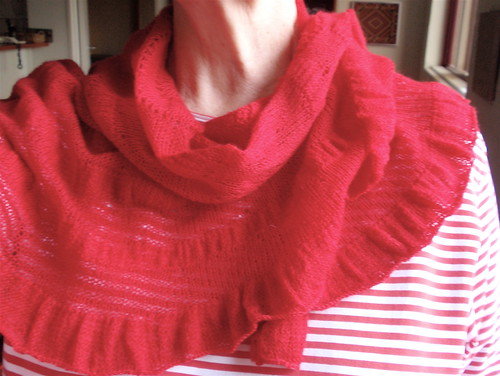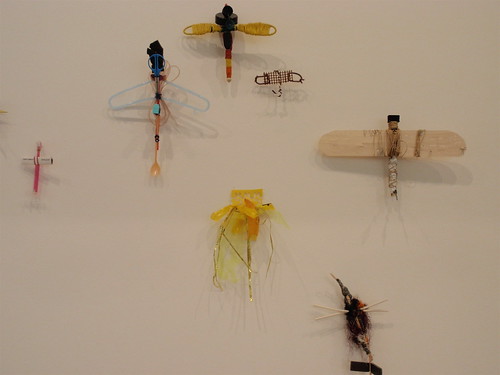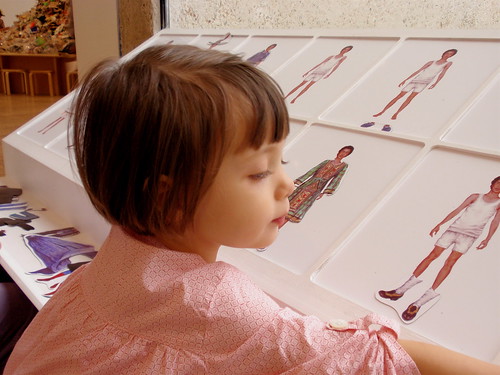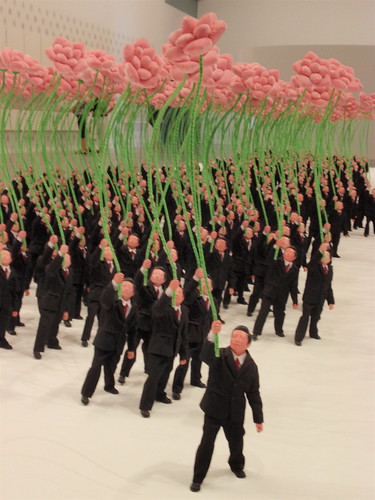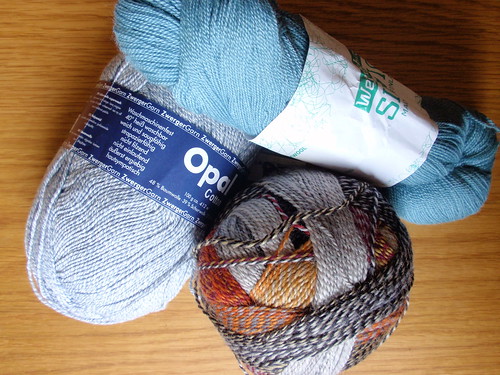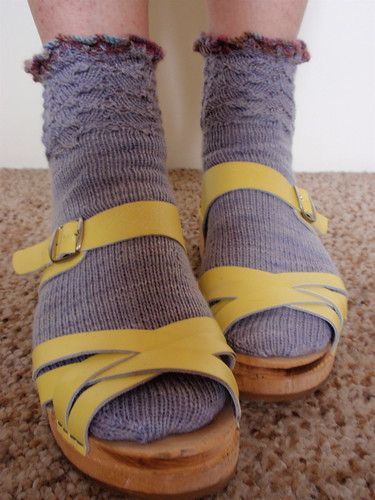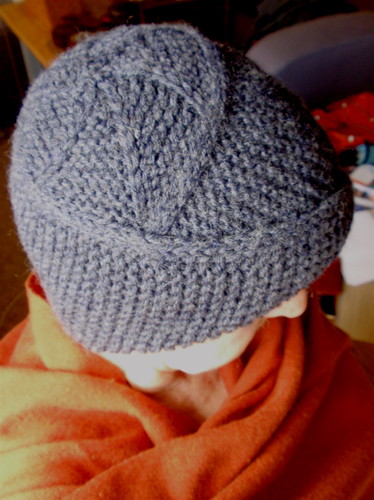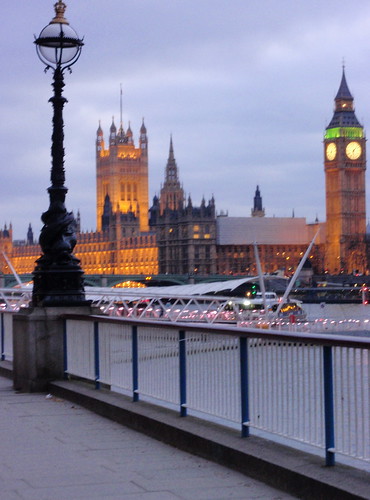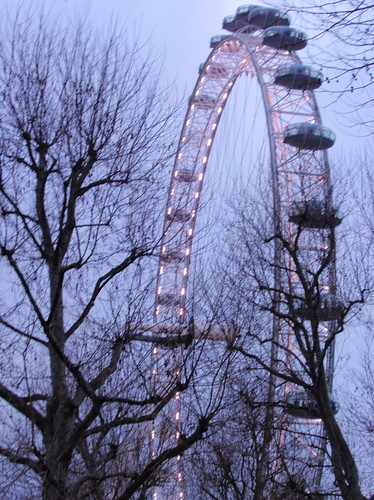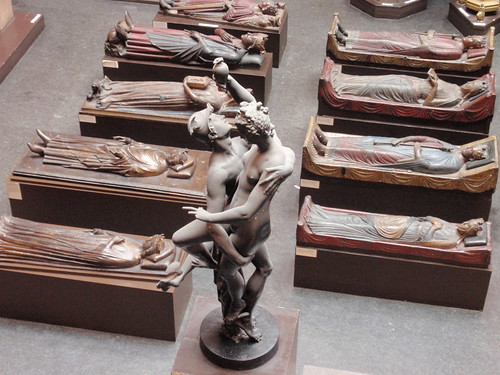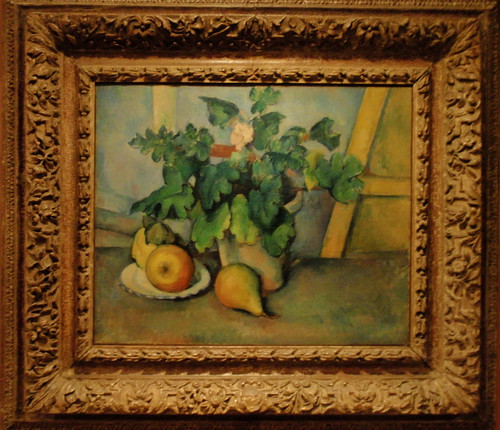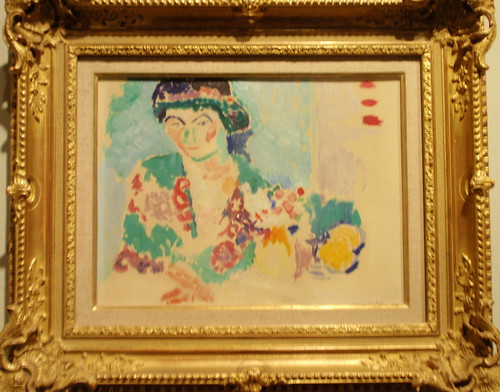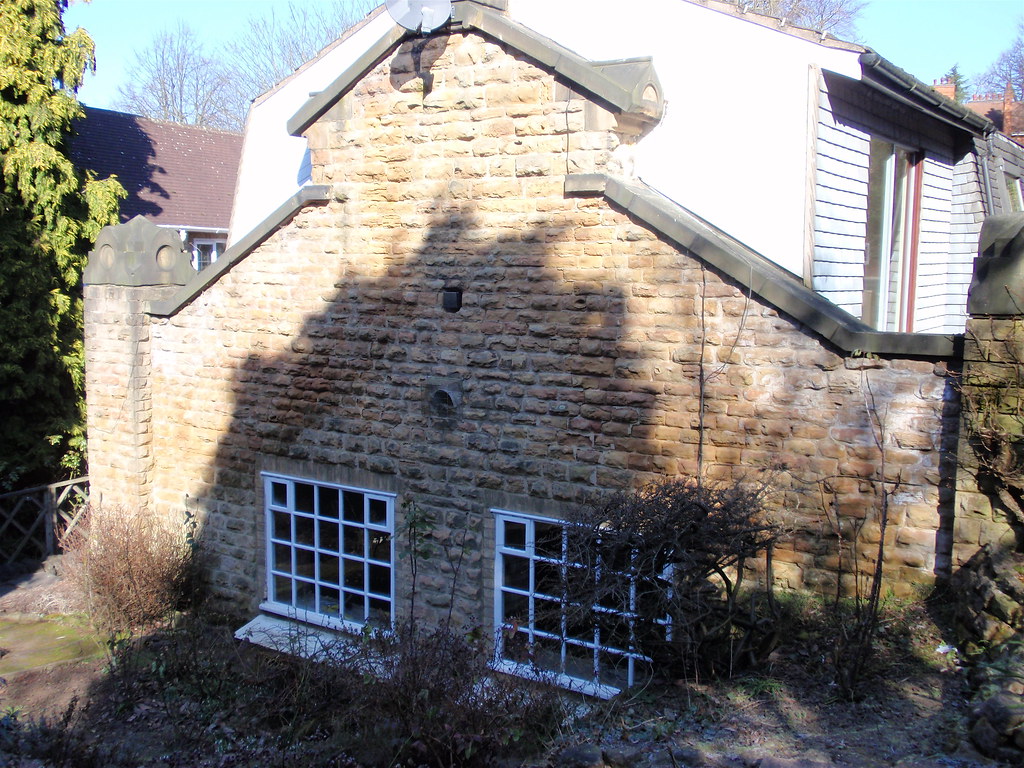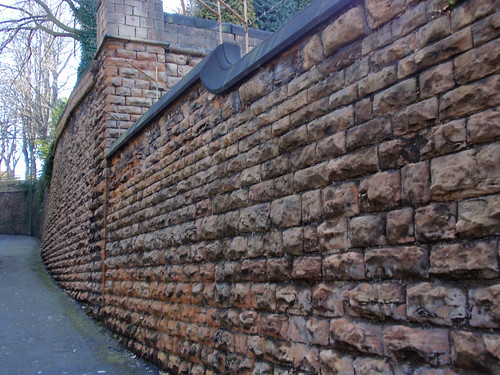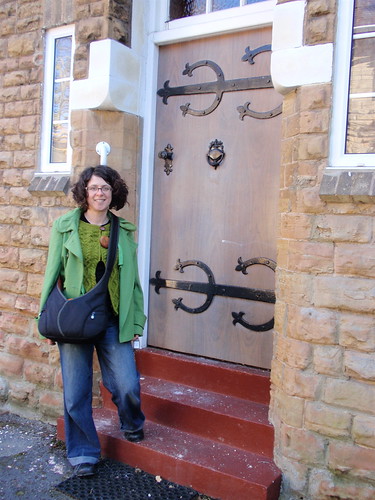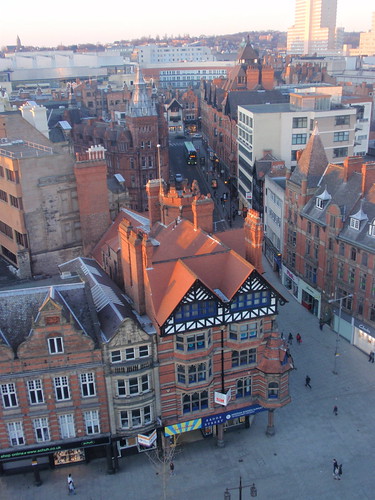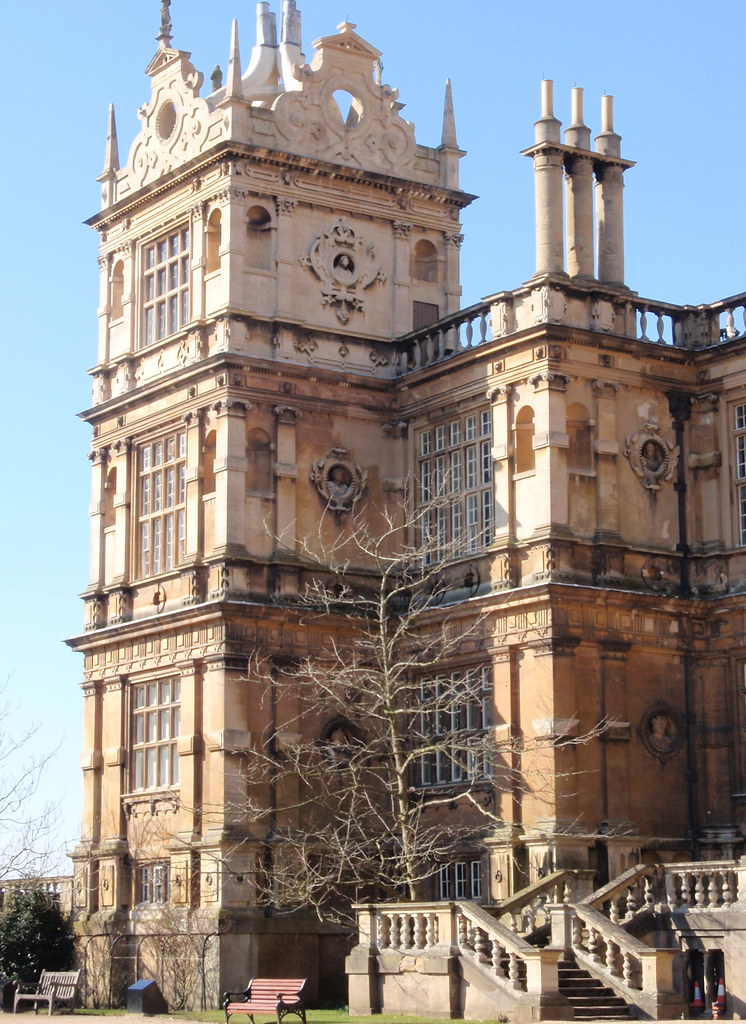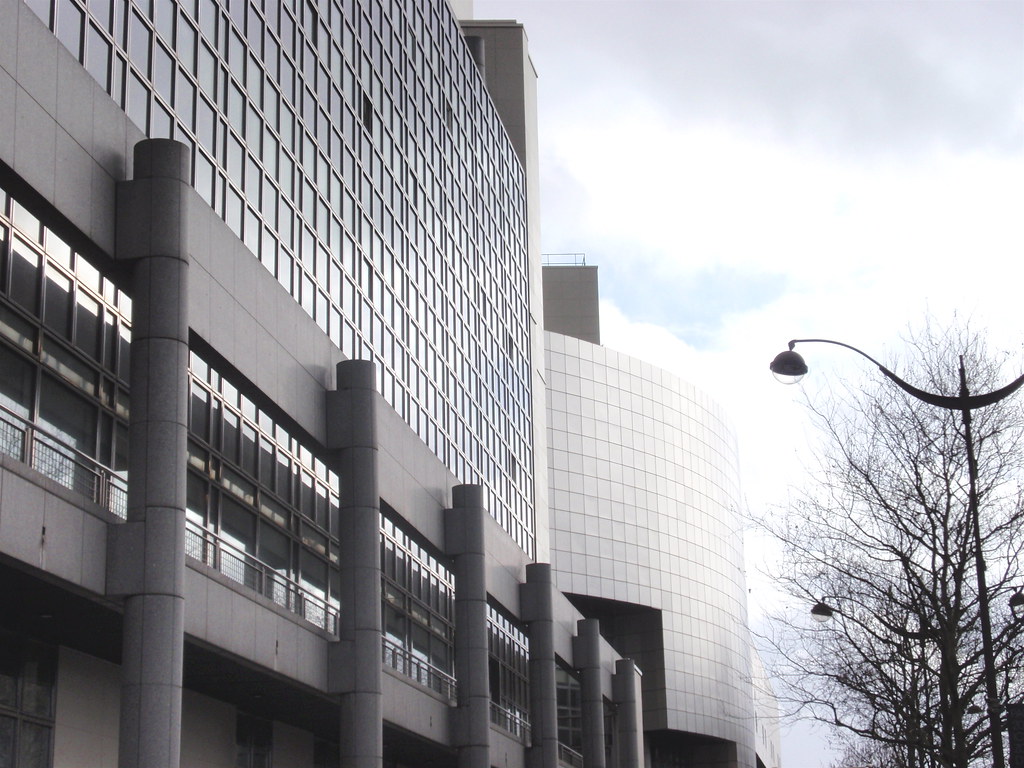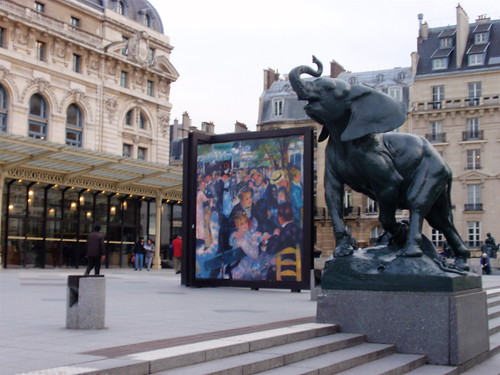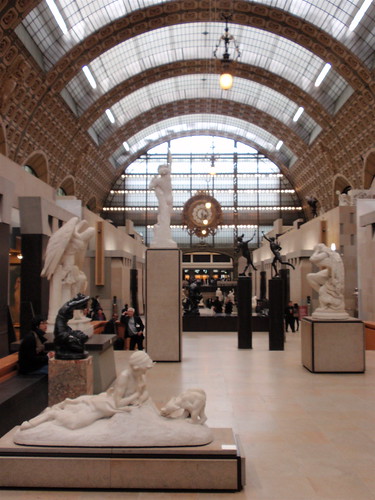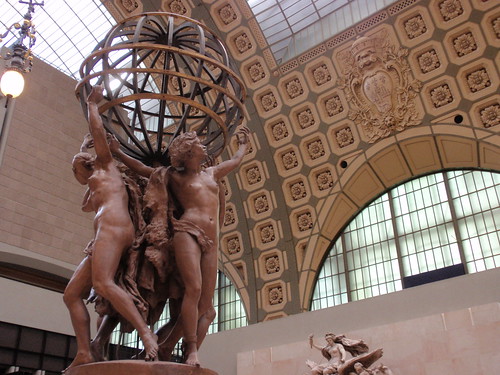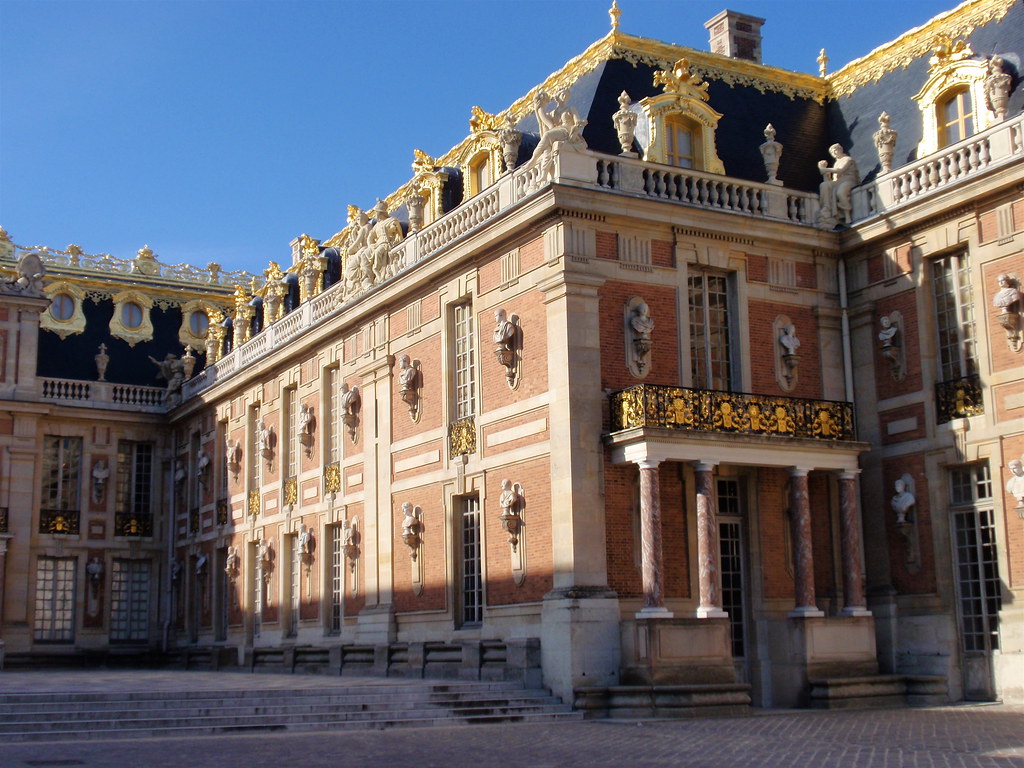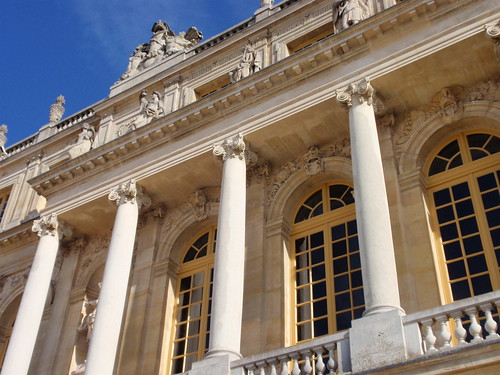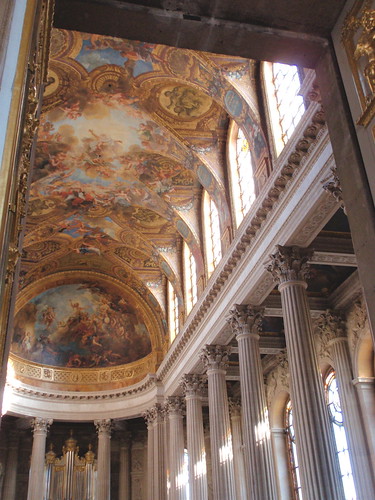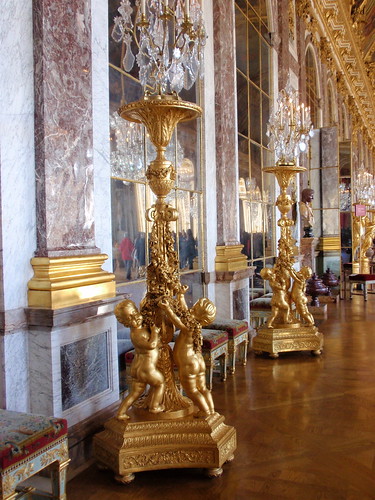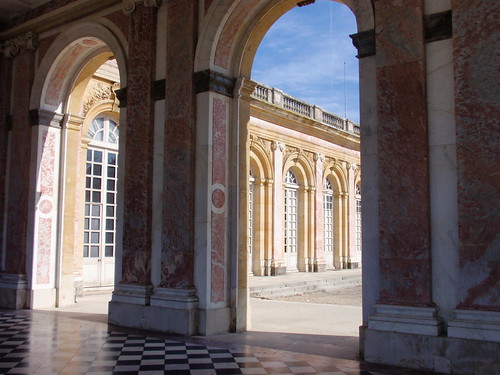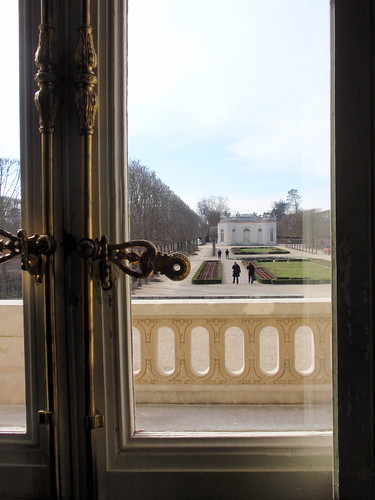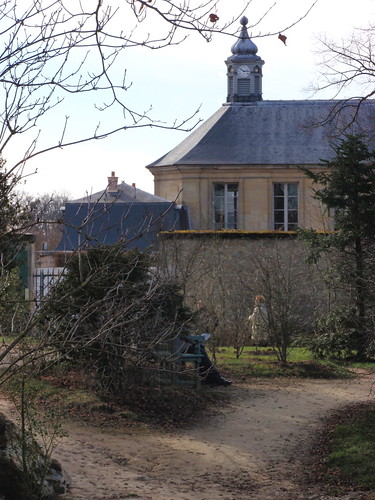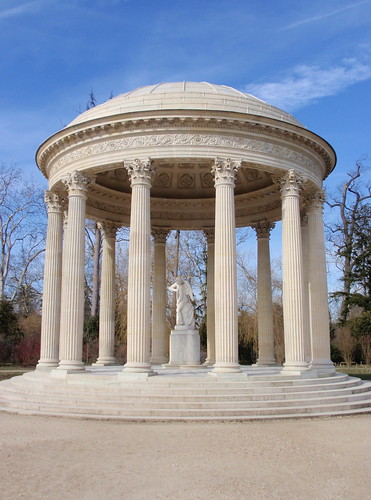We did manage a visit today to President Pompidou's
grand projet - the Centre Pompidou where, among other purposes and functions (a library, a cinemateque) the great modern masters of French art are displayed. I love the way the bright colours and plumbing shapes of the building are suddenly there in front of you as you emerge from the Metro
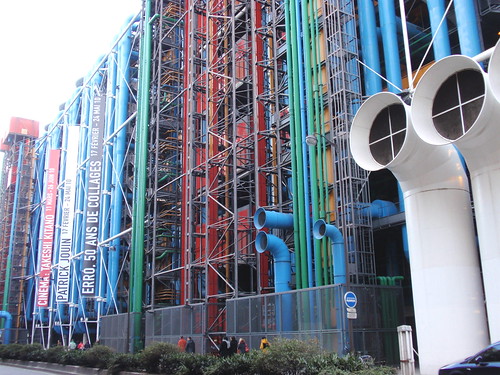
and the way that access to the various floors of the museum snakes diagonally across the exterior of the building.

But such a shame. Today the great masters of modern French art were not on display - they are being rehung to show them to even greater effect to people who visit the museum after next week! We had to make do with a retrospective of the works of French painter Soulages (interesting, but no compensation for missing Matisse) and a rather confronting exhibition of women's art since about the 1960's. This was very uncomfortable - so much of it was angry, and many works had not really survived the context in which they were produced. For me it was more effective as social history than as art, but even then it was too bombastic to stay for long.
Even without the pleasures of the paintings, there was the immense pleasure of the view from the museum:

So, our visit to Paris is at an end. There's so much left undone, but I guess the positive side of that is that there are still many reasons for returning. I'm going to be brave. After more than two weeks in Paris, I'm going to list the best things - or at least the things that have given me most pleasure.
I'm going to risk a list of five:
1 The Paris Mosque - for its beauty, its unexpectedness, and because it typifies the multicultural nature of Paris that is so often overlooked.
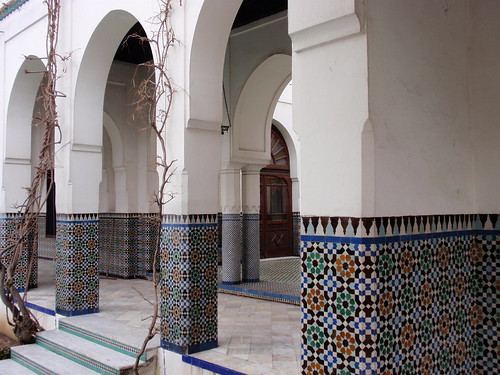
The pleasures of visiting the Mosque are increased if you take time for a stroll through the food shops of nearby Rue Mouffetard.
2 Lunching (or dining) at small restaurants serving traditional French food. Delicious, and excellent value. First prize goes to our local restaurant, 'Le Passage', where we managed to have three meals during our stay. We popped in for lunch today as an
au revoir gesture - though you really can't just 'pop in' to such restaurants. They are formidably efficient, but dining is taken seriously. I particularly love the seasonal vegetables at 'Le Passage'. Today I had roast rib of pork - not too much; not too rich - and it was served with a smooth puree of celery and potatoes and still crisp fine slices of beetroot. But we've gone beyond 'Le Passage' to try other local restaurants recommended by our wonderful house swapper, Christophe. I've been too embarrassed to blog about the stuffed shoulder of veal with mushrooms and braised endive at nearby 'Chez Paul'

or the spicy
tian of haricot beans, bacon and sausage served at the Corsican restaurant just around the corner. The Corsican restaurant, by the way, is the only place I've encountered on this trip where I've absolutely had to use my embarrassingly minimal French to get by.
3 My old favourite, the
Place des Vosges.

What can I say? Perfect. Just the right scale, regular without being uniform, and clearly valued by the locals. I've been fortunate on this trip that it's often been on my way going elsewhere, so I've had lots of occasions to sigh in admiration.
4 The skyscrapers and La Grande Arche de La Defense I love their bold assertiveness.
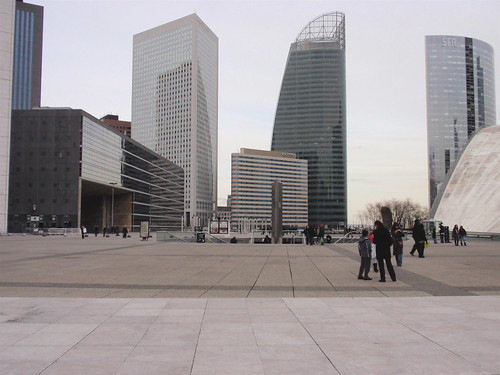
They compete with the grandeur of old Paris; they don't just give in to it. The buildings are diverse and imaginative and the scale is awe-inspiring. And there will be more skyscrapers in the future - part of President Sarkozy's
grand projet is to make Paris 'more than a museum destination'.
5 The Promenade Plantee - the garden walkway that's been created on top of a disused railway viaduct in the twelfth
arrondisement. Again, my liking is largely a matter of the scale of the project, but, unlike La Defense's grandeur, I like the promenade plantee because its scale is so human.
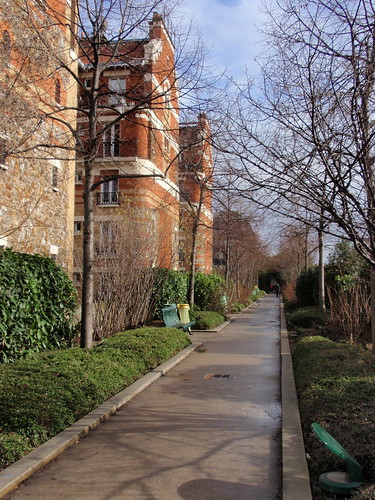
It's such a creative idea - using the old elevated railway tracks to build an extended garden walkway above the busyness of the streets below (the walkway in this photo passes by the windows of the fourth storey of the neighbouring apartments). I want to come back in Spring when the bulbs are in bloom or in late Summer when the innumerable roses are flowering.
Maybe an odd list. There's so much to do in Paris, and you'll visit the
grands projets anyway. Some of these are not so grand, but they show Paris in its diversity and they gave me lots of pleasure.
